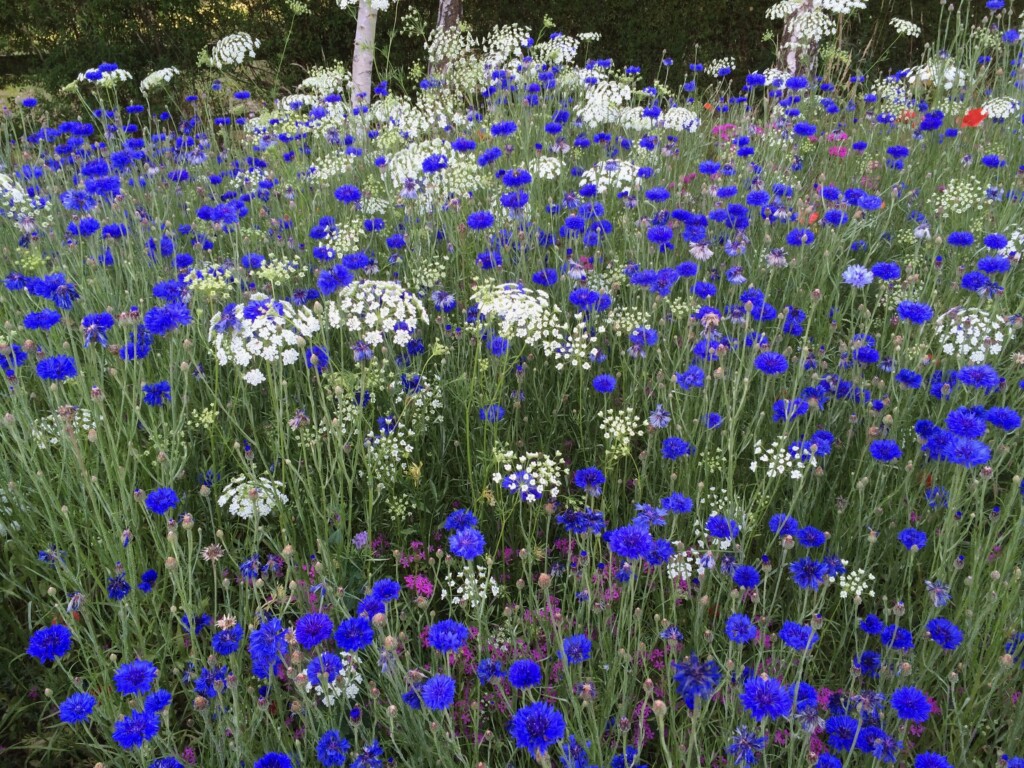I'm wondering if anyone has successfully grown a wildflower meadow in southern Australia and solved the weed problem.
I experimented with a section of my Adelaide Hills garden 18 months ago. I sowed a mix of Ammi majus, cornflower, daucus carrota, and cosmos. The first year was great but now weeds are starting to take over and I'm wondering whether it has a long term future. It's surrounded by a paddock and I think a lot of annual weed seeds settle on the site and I'm not sure there's a good way of dealing with it.
Has anyone else tried something like this and succeeded?
Wildflower meadows

Discussion
Leave a Comment
You must be logged in to post a comment.
This sounds just like my meadow. I’ve mostly solved the weed problem but it meant about 2 months last year on hands and knees removing weeds before they seeded and mulching with straw. But it was worth the pain as the meadow is now almost weed free.
I wish we could find another name for these beds of annuals. In the uk this designation is prompting people to dig up ancient pasture/meadow to sow with annuals. It’s a heavy ecological price to pay.
Have you considered a meadow of weeds, and give yourself a chance. Anything is possible, it simply comes down to the amount of energy and money fighting nature all the way
Have you considered a meadow of weeds, and give yourself a chance?
Anything is possible, it simply comes down to the amount of energy and money required to achieve a goal.
Unfortunately we have a lot of salvation jane and capeweed which I’m obligated to remove. These weeds dominate the areas of disturbed soil.
As much as possible we try and avoid disturbing the soil but it’s sometimes unavoidable. The dilemma is how to get the disturbed soil back to something that’s manageable. I sowed the wildflowers so there was something to provide some coverage, which sort of worked in the first year, but the weeds are germinating earlier than the flowers and are now dominating.
I certainly wouldn’t advocate digging up ancient pasture to replace it with annuals/wildflowers.
And part of the problem is that this kind of meadow requires disturbed soil (as the blog posts re: meadows will explain – for those following this thread, it’s worth searching ‘meadows’ in the search button on this site, for three successive posts on different types of meadow and their maintenance and management requirements, written a few years back). So each year you have to disturb the soil again to ensure seed germination, and thus ensure a good weed crop as well. It certainly sounds like you’d be far better to look at establishing something using grasses and perennials that might have a competitive chance against the opportunistic weeds, and avoid the need for annual disturbance
Thanks Michael for responding to my post and pointing to the blog posts. Reading them now 🙂
Meadow is such a loose term, but I think you need to expand your plant list especially whilst you are learning what will and won’t survive. As well as compete with rogues you describe. 20, to 50 species at a time germinating and growing over an extended time period may throw up enough options to give you a chance.
we have a sort of accidental wildflower meadow at our block near Johanna beach. I am constantly amazed at the flowers that combine with the grasses to create quite a delightful mix. However it might not work in a smaller expanse because it’s been professionally neglected for many years I’d have no idea how to replicate it!
Christopher Lloyd would proudly state that his meadows hadn’t been fed for 400 years. It’s nearly always soil nutrition that’s the problem. Clearly there’s little danger of that where you are!
I was once admiring a meadow with a well known gardener, which he’d established some years before. When I asked him how he controls the cocksfoot grass he simply said he quite liked it. I’ve thought a lot about that since.
‘Meadows’ are tricky in the Australian climate, lots of work to keep them looking good. You have to be prepared to weed and as Michael said, ecologically speaking, soil disturbance can actually be help rather than a hindrance.
The only thing I can think to suggest is to try and find a way to inhibit the blowing in of unwanted weedy annual seed. We used to achieve this in bushland management by fixing hessian bags along fences, from the ground to about hip height, especially when the weed seed source was uphill from the area we were protecting. Granted, it looked bloody awful, like a depression-era laundry, especially after a couple of years, but it worked to a large extent. Enough to get direct-seeded plants established in the first couple of years of growth.
I’m fascinated by that, James. I’ve always considered it so near impossible to understand how seed arrives on a site that it’s not worth doing anything to even attempt to avoid it.
What I always find contradicts my understanding about the blowing in of seed is after I’ve had a bonfire. Clearly the fire kills off all the local seed bank, and I’m always astonished at how long it takes for other blow-ins to establish on the site. I always expect they’ll arrive virtually immediately.